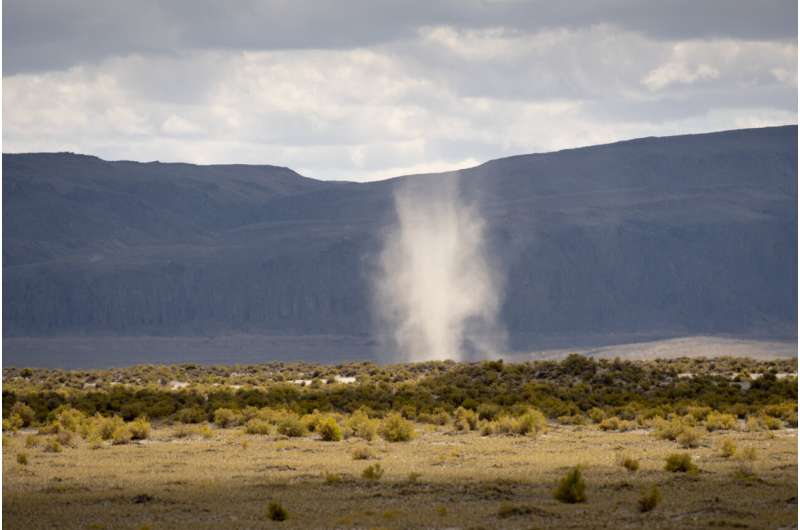Drones probe terrestrial dust devils to better understand the atmosphere of Mars

Dust devils, small dusty whirlwinds, have been studied for decades. But, says Brian Jackson, an associate professor in the Department of Physics at Boise State University, the ability of dust devils to lift dust into the atmosphere remains murky. "When we compare theoretical predictions of how much dust a devil should lift to how much it does lift, the numbers just don't add up," says Jackson.
Now, Jackson and his team, including Dr. Ralph Lorenz of Johns Hopkins University's Applied Physics Lab and Michelle Szurgot, an undergraduate physics major at Boise State, have begun to study the phenomenon in a way it has never been studied before. They fly drones through active dust devils on the Alvord Desert of southeastern Oregon. The drones carry cameras and other lightweight instruments, including pressure and temperature loggers, that measure the structures of the dust devil while taking particle samples to determine how much material the dust devil is carrying. Jackson will present results today at the EPSC-DPS Joint Meeting 2019 in Geneva, Switzerland.
Dust devils, while common in arid climates on Earth, are ubiquitous on Mars, where they may be responsible for much of the planet's haze that helps heat its atmosphere. Dust devils have been observed from landers the ground and from orbiting spacecraft all over the surface of Mars. A better understanding of dust devils on Earth will help scientists understand their influence on Mars' climate, says Jackson.
NASA currently has three active rovers on Mars, two of which are powered by solar panels. Martian dust has been a concern, falling on the panels and reducing the amount of energy generated, and the static charges that can build up in the dust devils may pose a hazard to electrical equipment deployed on Mars.
Previous studies of Martian dust devils have relied on passive sampling of the profiles via meteorology packages on landed spacecraft. Past studies of terrestrial devils have employed more active sampling (instrumented vehicles or manned aircraft) but have been limited to near-surface or relatively high-altitude sampling.
Drones promise a new and powerful platform from which to sample dust devils at a variety of altitudes. Measurements made aloft are more directly relevant for evaluating the dust that is injected into the atmosphere.
Provided by Europlanet Society



















